The box is interesting in that is it both professional and slightly well I guess cartoonish is the right word here. It has a nice image of the product on the front and plenty of information about the RT-N16 right where you can see it, however Asus then gives you a very goofy looking Head with a speech bubble coming out of it that says “Hi! I am Dr. Surf”. Even my kids thought it was a tad cheesy. Of course if the logo is cheesy, we know from experience that the software behind it is not (but that is for the full review).
 |
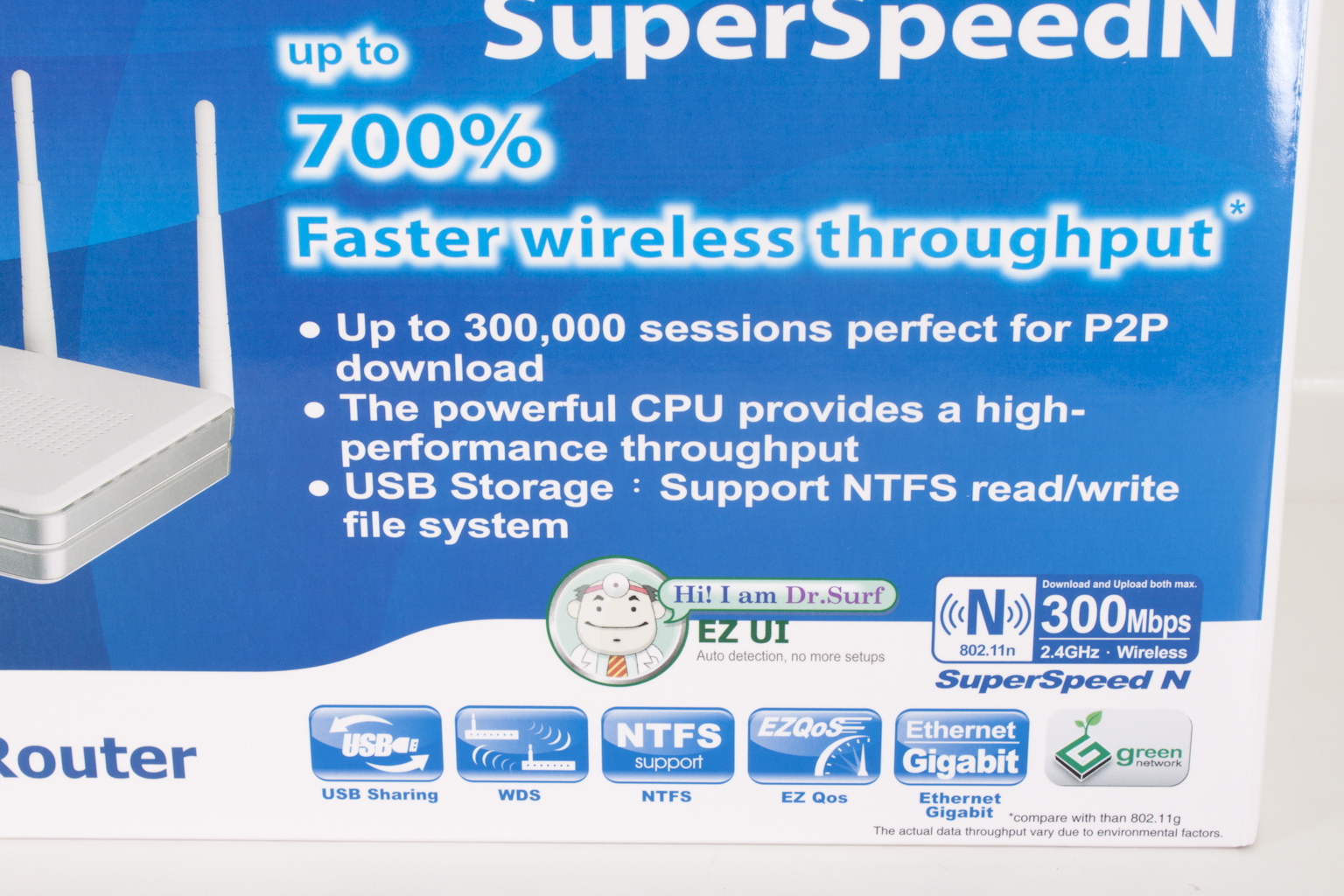 |
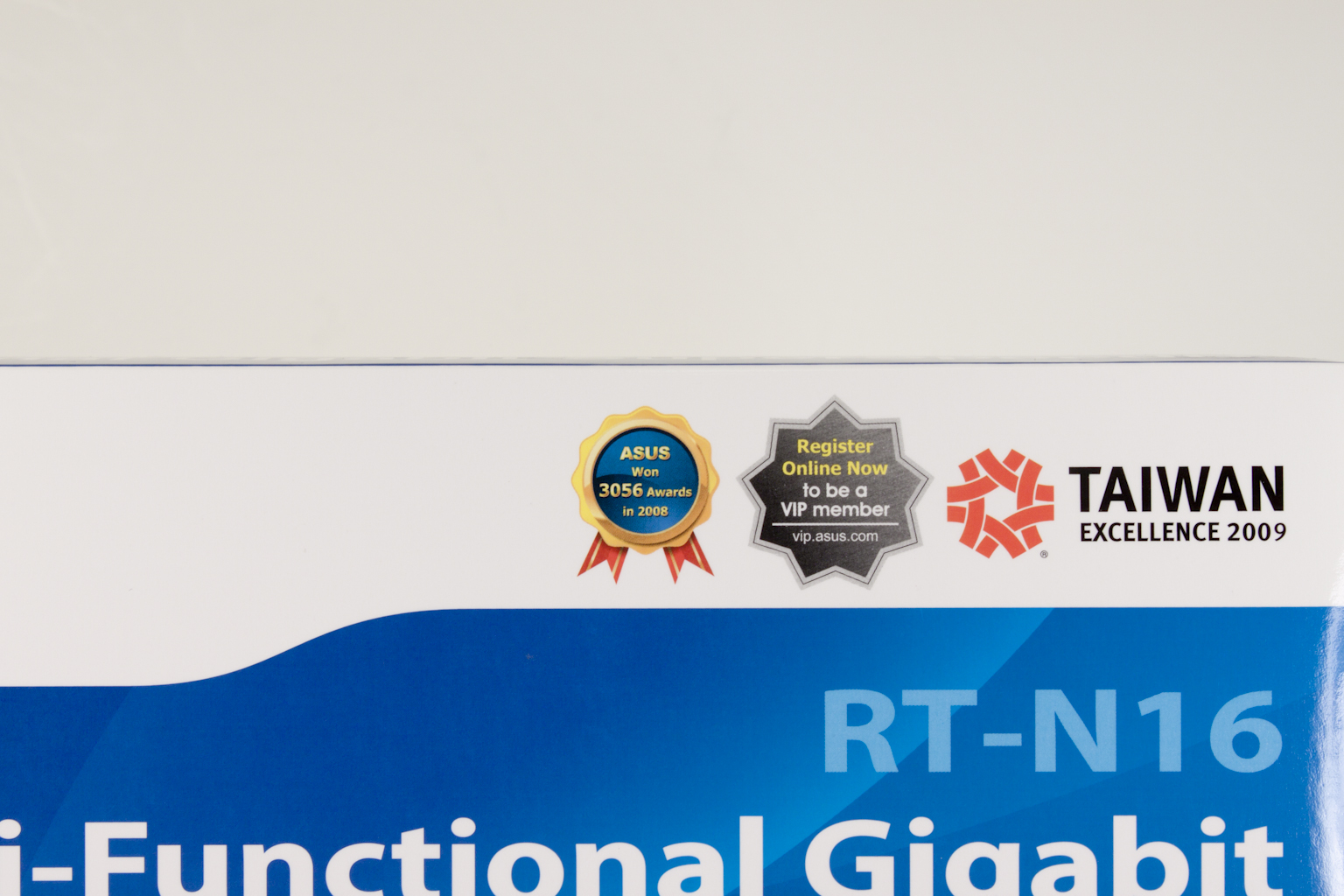 |
Still if you can get past that (which was one of the first things I looked at) you will find some nice items like the claim of 700% faster (up to). Although it does not say what it is faster than; we will assume they mean wireless g. Asus also list that they have a very powerful CPU under the hood; this is actually a 533MHz SoC (from Broadcom we think) that powers the system. On top of that the new USB AIDisk function supports NTFS read and write! That is something to be happy about for people that own large capacity drives. The days of relying on Fat32 are quickly going away; you can now plug in an NTFS formatted USB drive into the RT-N16 and enjoy the speed and large file abilities of that file system.
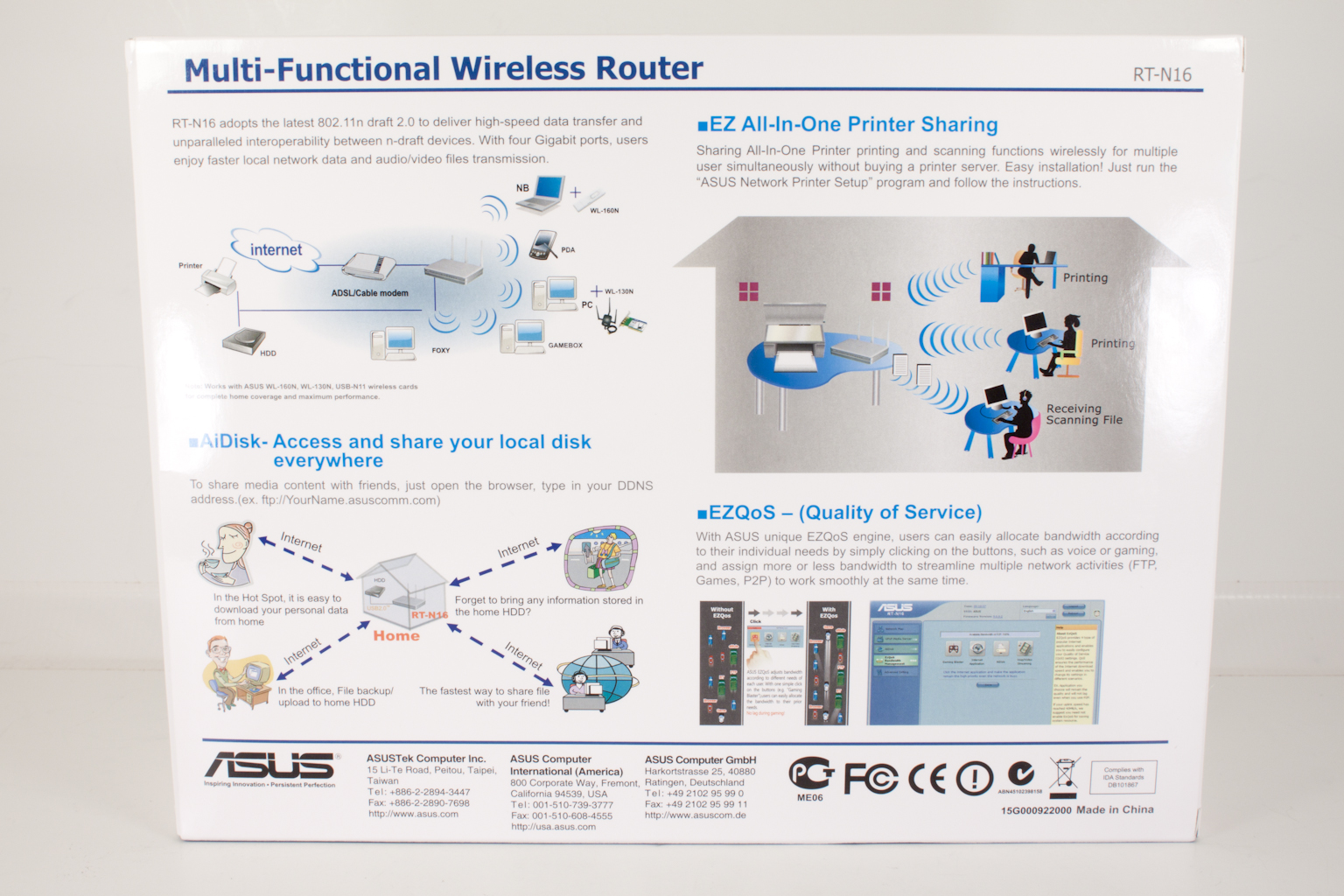 |
 |
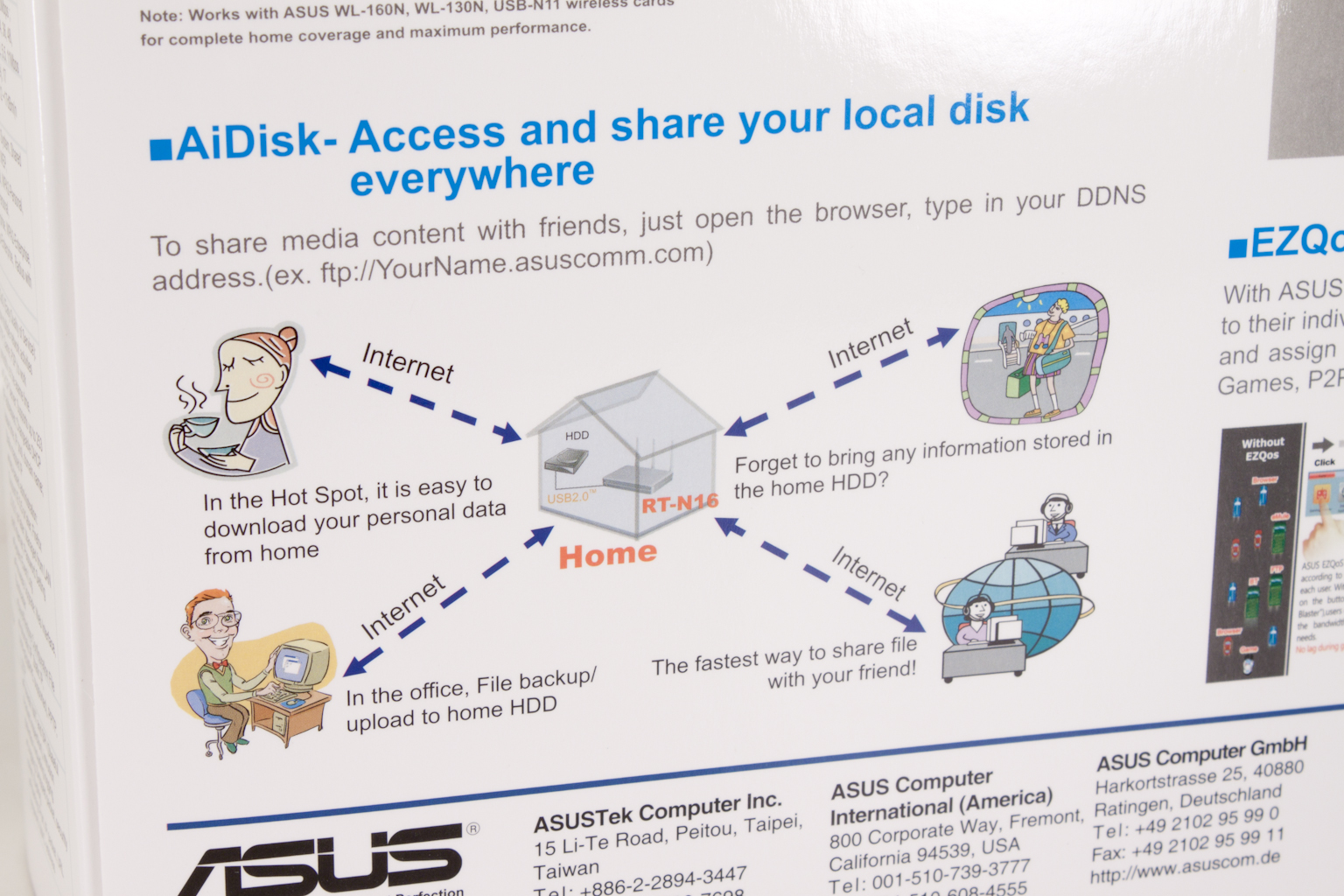 |
Flipping around to the backside of the box there are a few more items that are of import but due to the way they are presented they might get overlooked. The first up is the EZQoS; a great feature that allows you to use a visual graph and icons to set your network traffic priorities the way you want. We have already talked briefly about the new features in AIDisk so we will pass over that and only return to it in the full review. Printer sharing over wireless is also a nice touch.
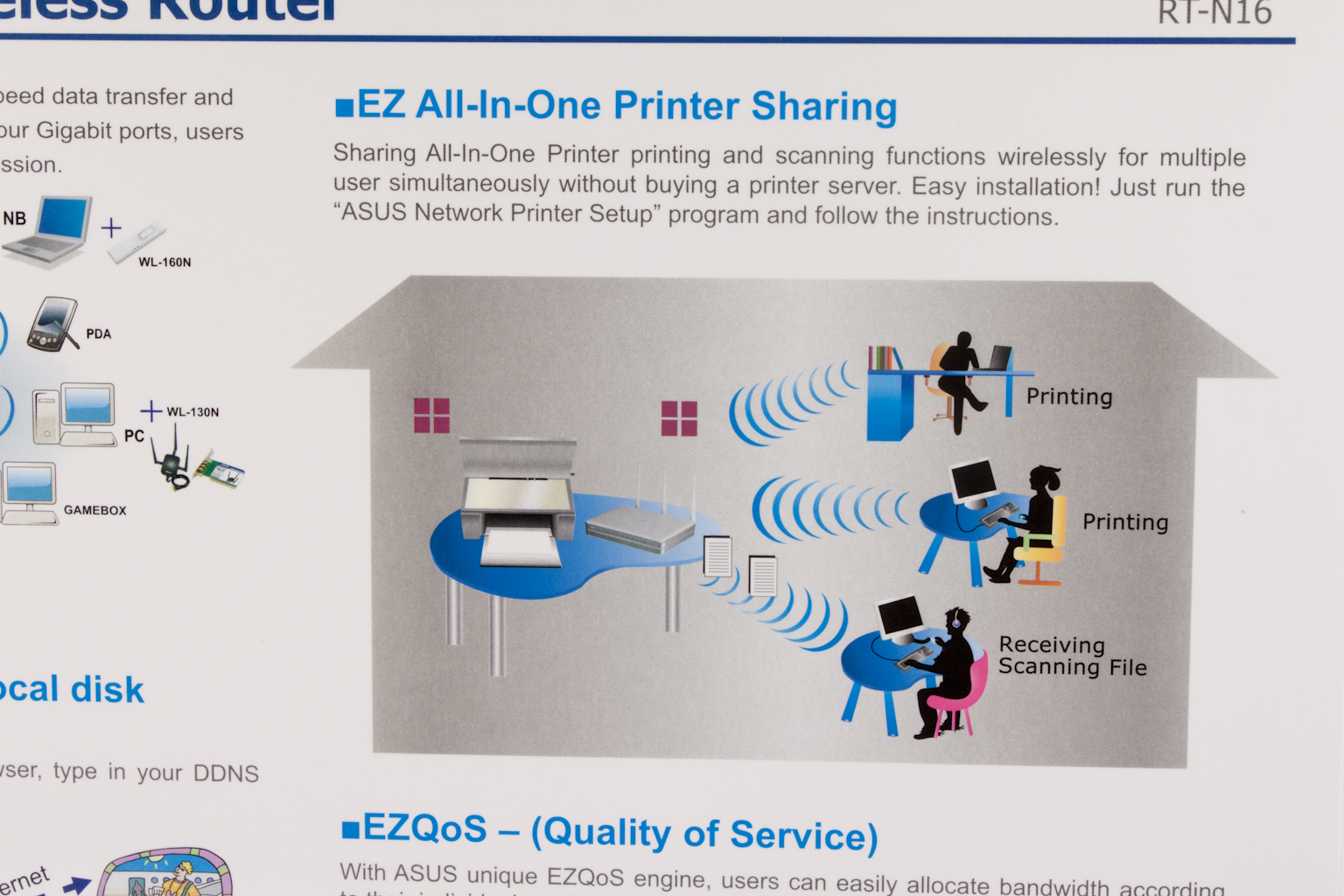 |
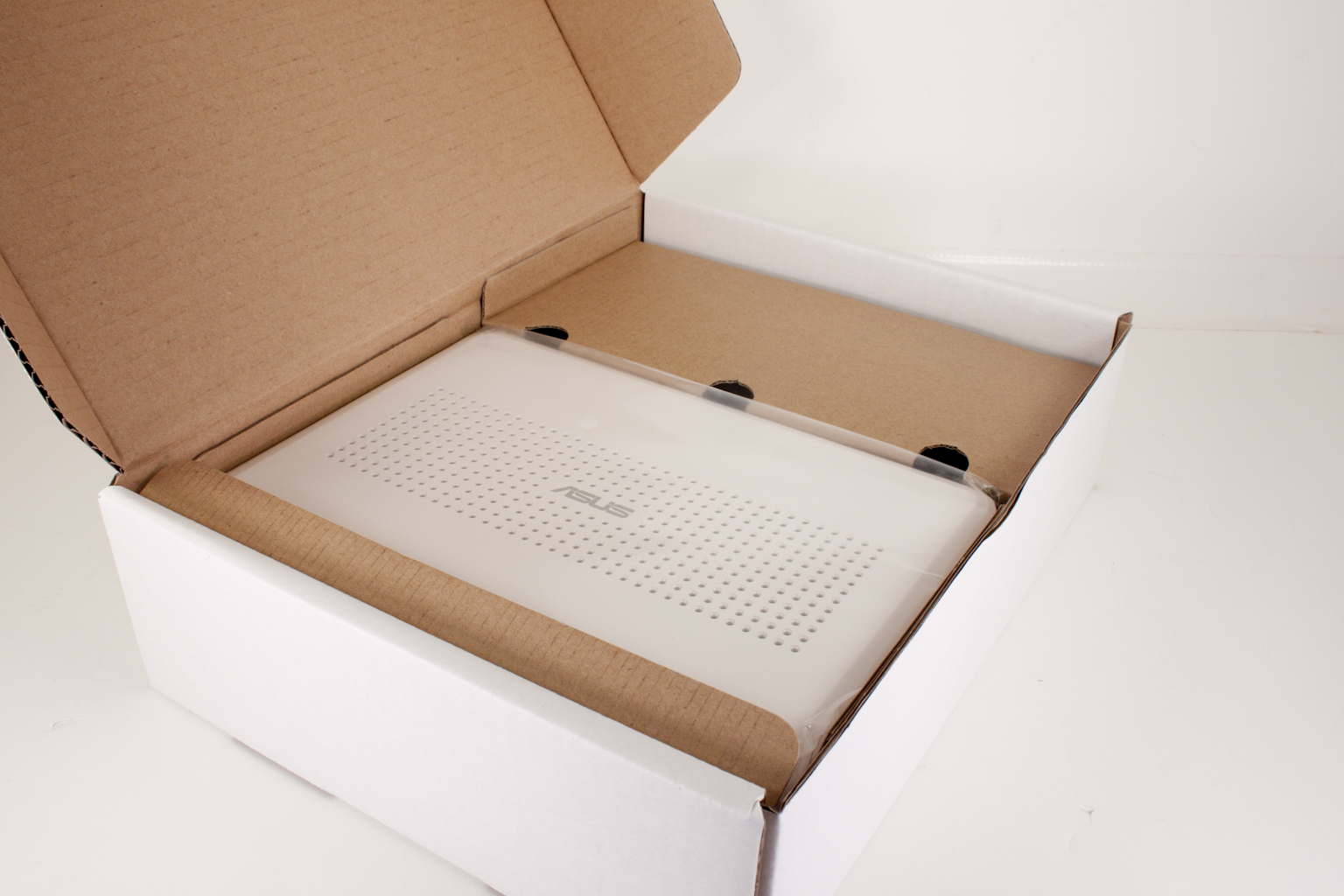 |
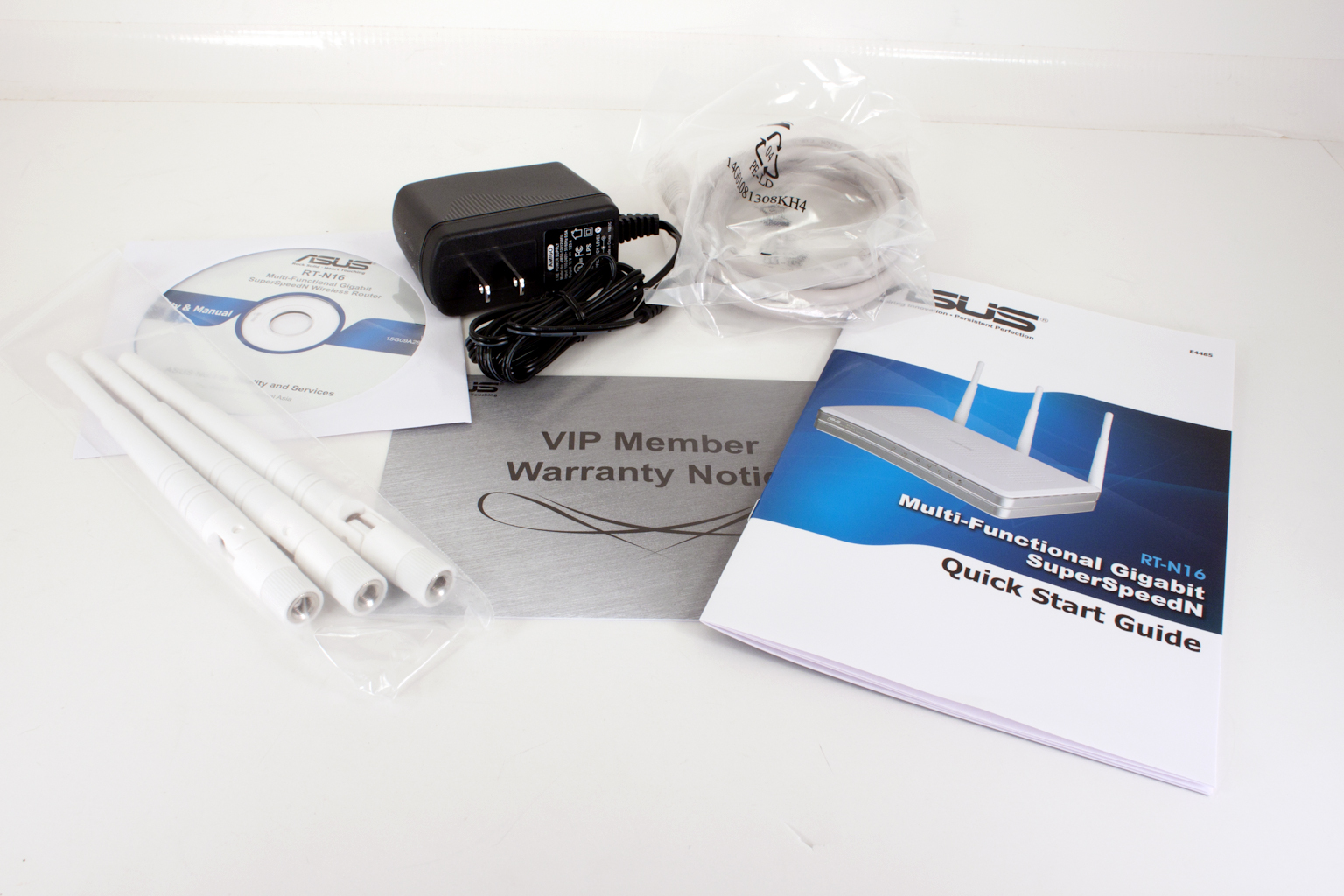 |
Opening the box we find the RT-N16 nestled in a plastic bag and secured in place by cardboard… pretty much the usual; nothing special here.
Pulling the RT-N16 out of the box we are reminded of a very old product. In today’s world of slim and curvy designs the RT-N16 is blocky and bulky. It measures 216 x 161.9 x 40.5 mm and is the familiar white and silver of Asus networking gear.
 |
 |
The back is where all the ports are, Asus has bumped all these up to GBe for faster response. You can see the connectors for the three Antennas (for three spatial streams) as well as the two USB ports for either AIDIsk or the print server function. The little red button will activate the Wireless Protected Setup.
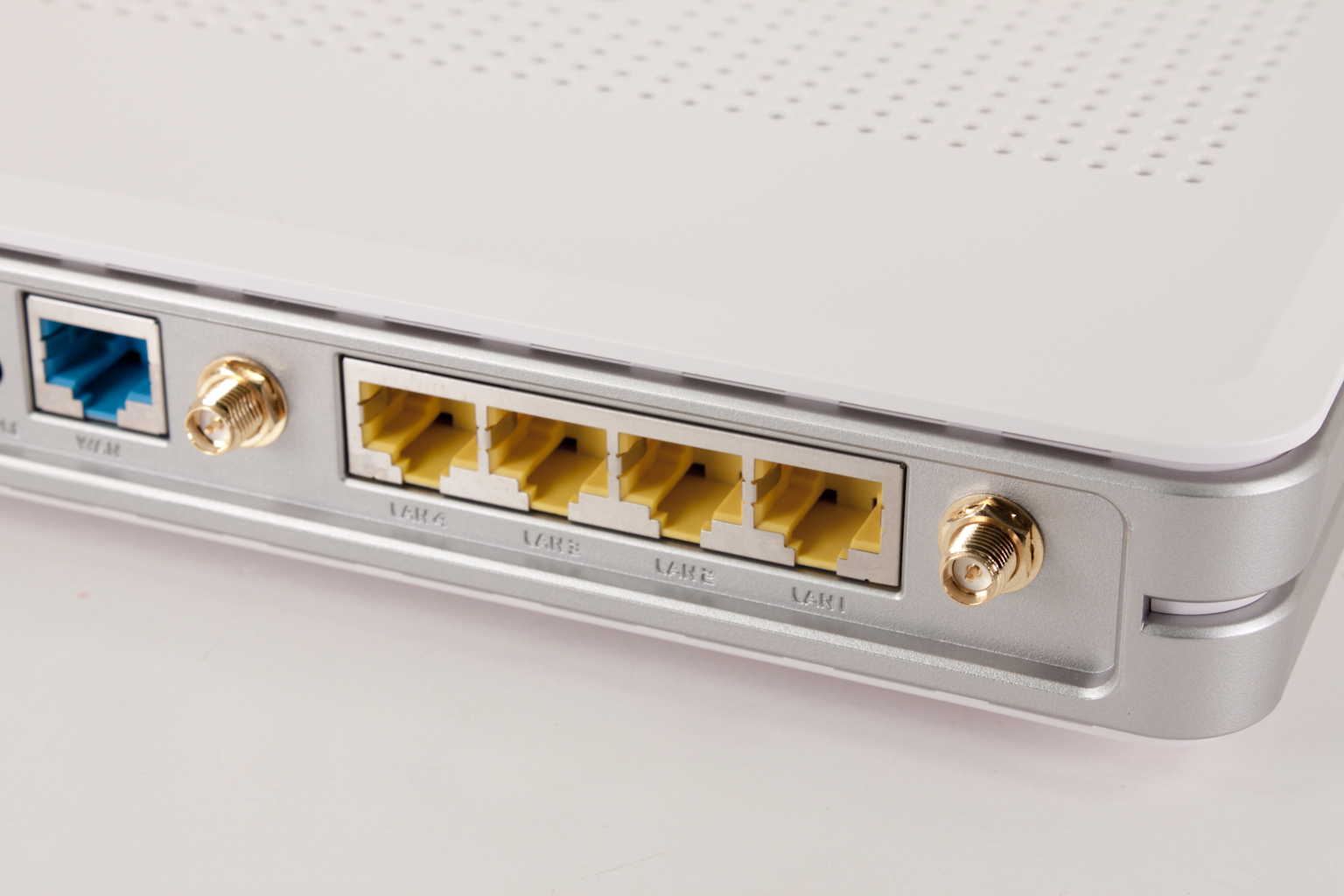 |
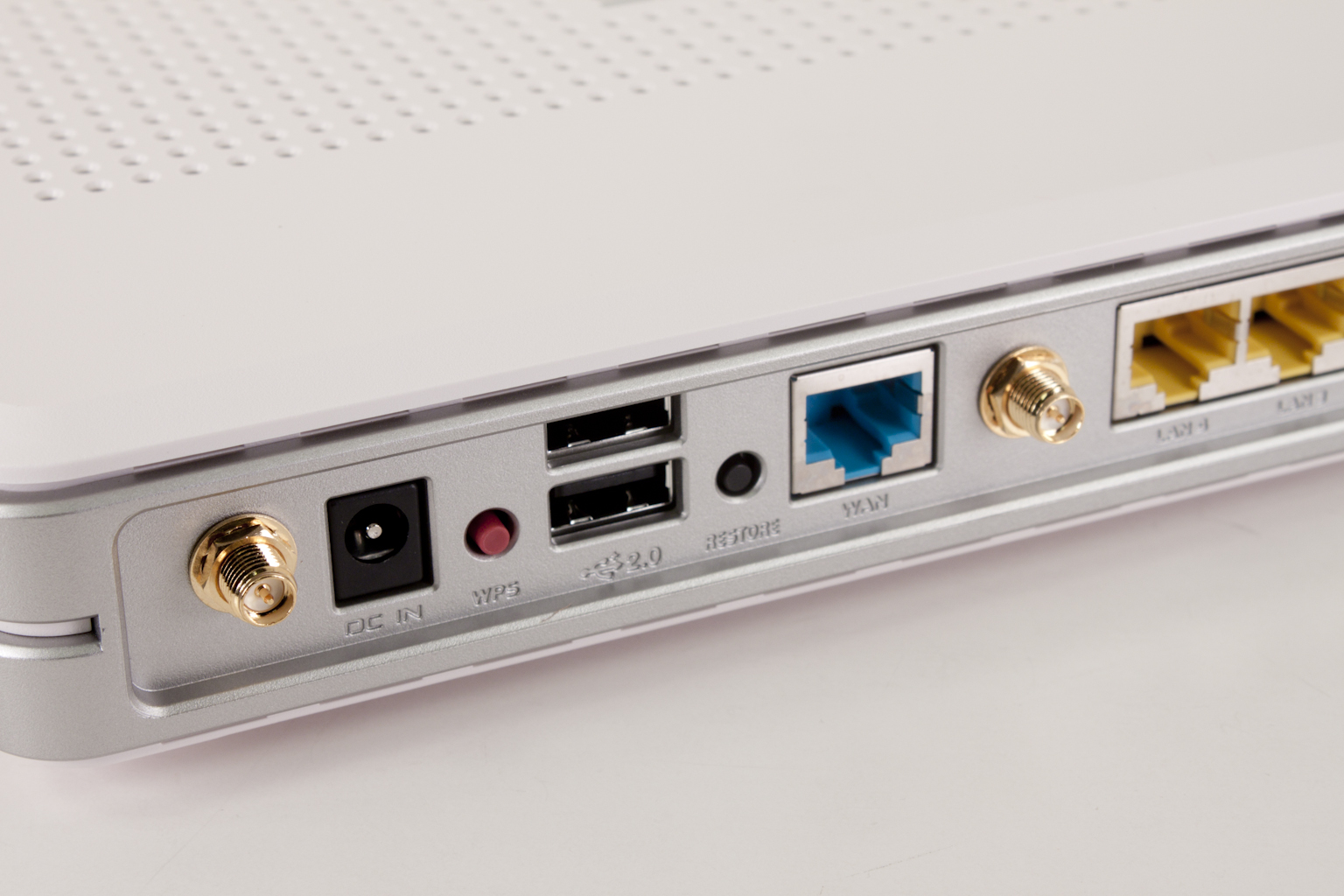 |
The bottom has more venting for the system along with a pair of mounting holes. Unfortunately the hardware for this is not in the box. Asus has also put some handy information here; the default IP, Admin username and Password. They also wisely admonish you to change these as soon as possible. The front has the typical images that light blue up to display activity.
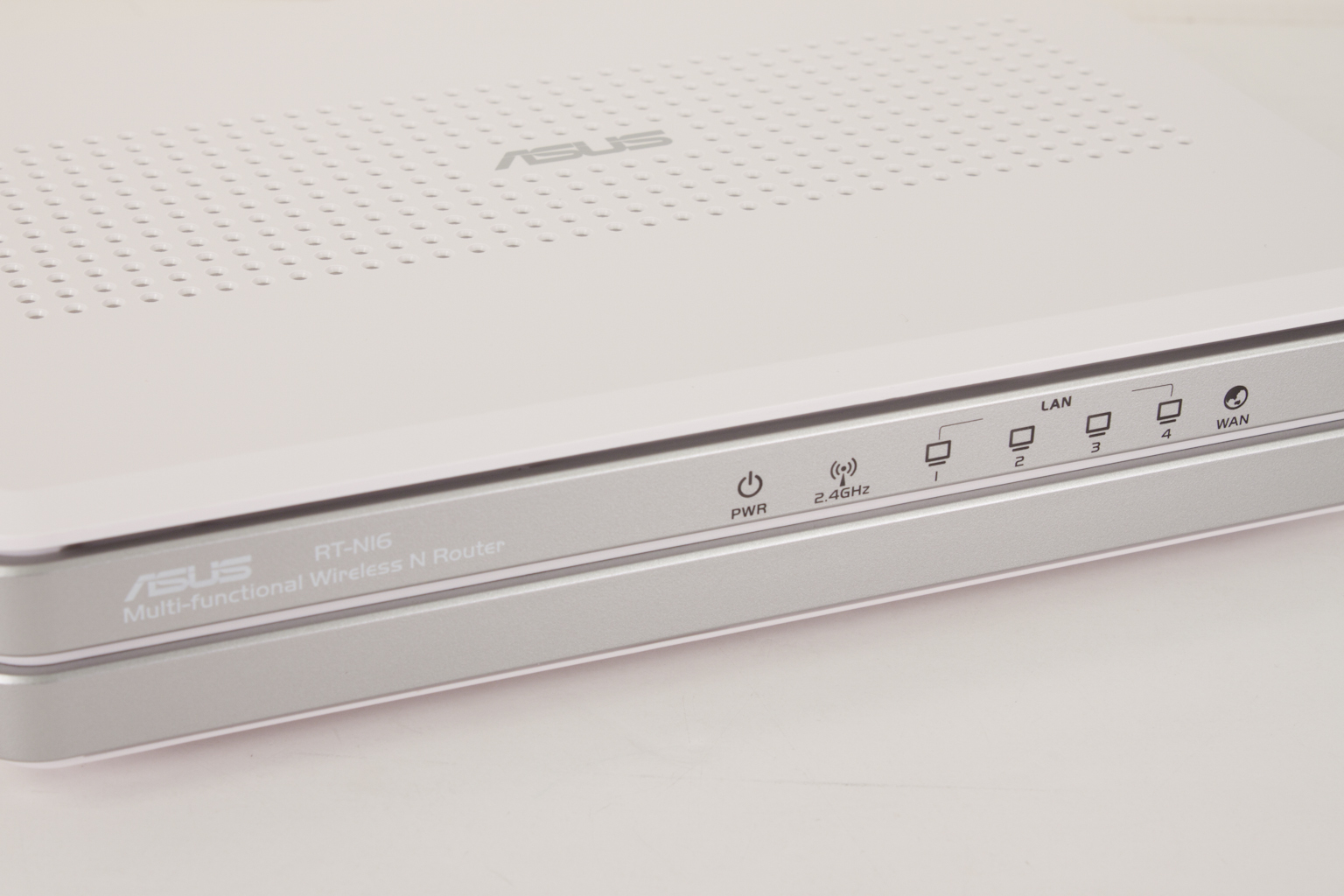 |
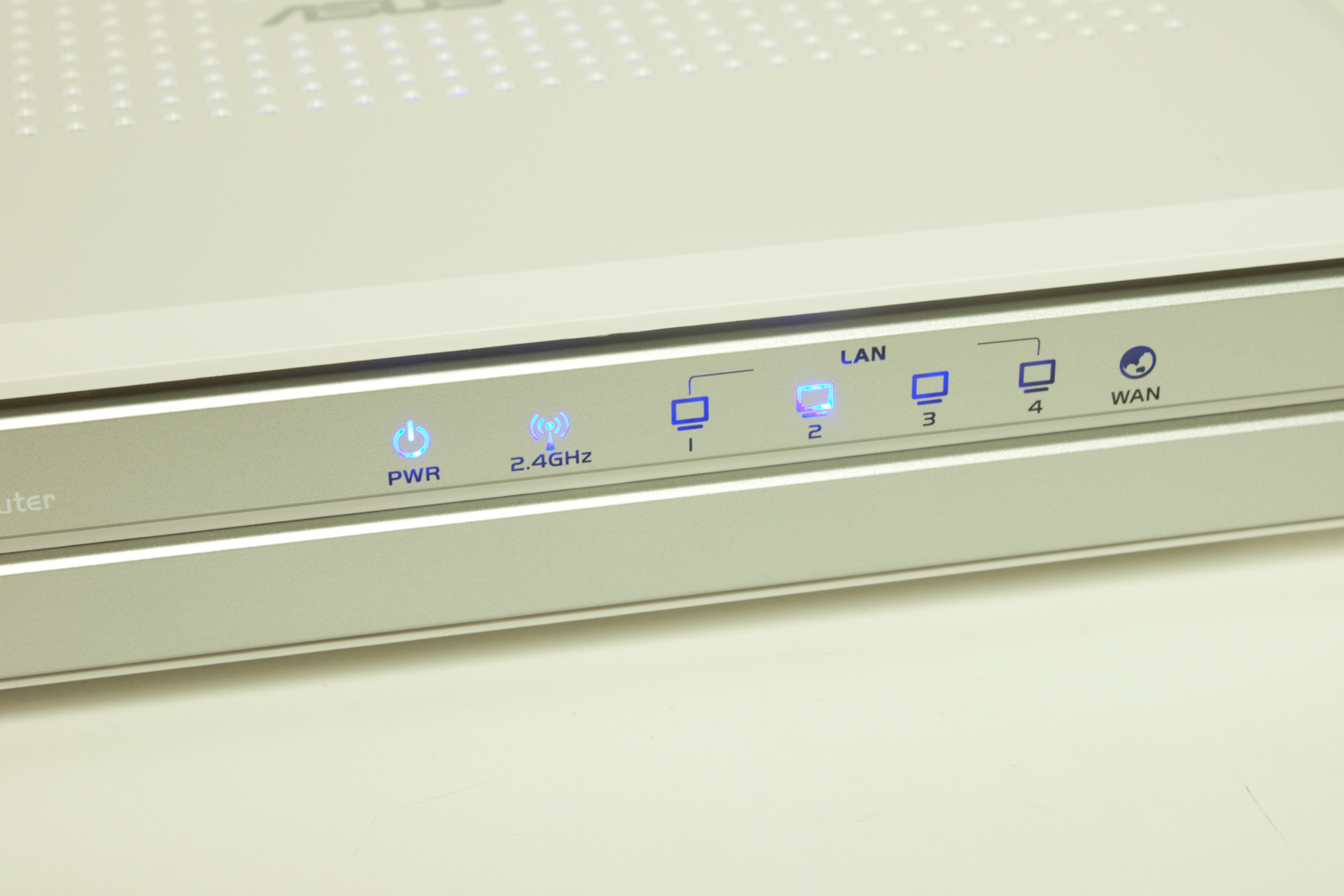 |
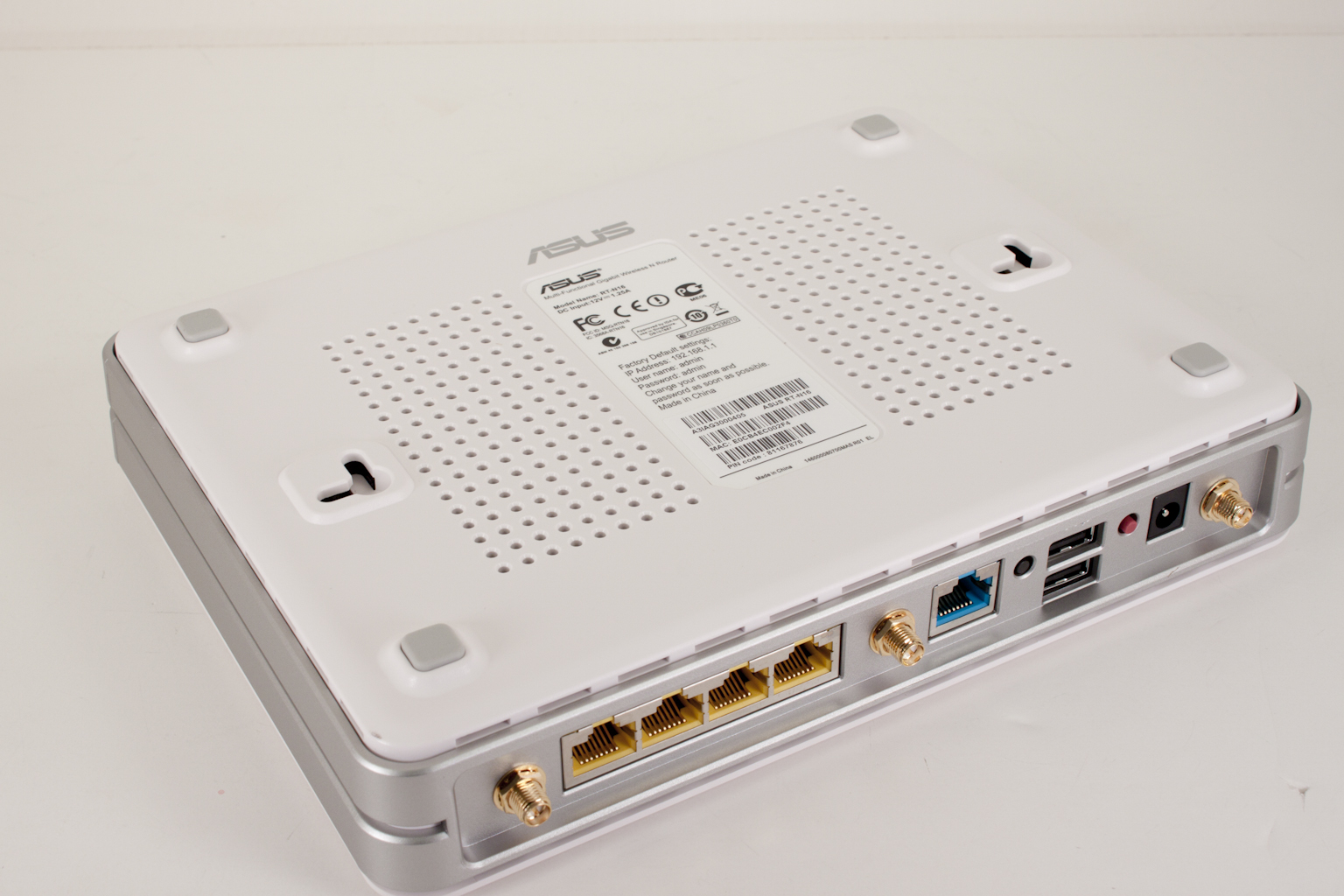 |
With the boxy, industrial look we are hoping that the RT-N16 is a workhorse; designed for speed and longevity. I guess we will see once we get things all setup on this end and start the testing.
-Ath
















